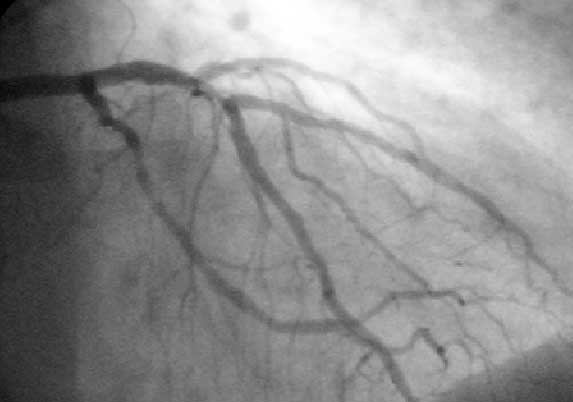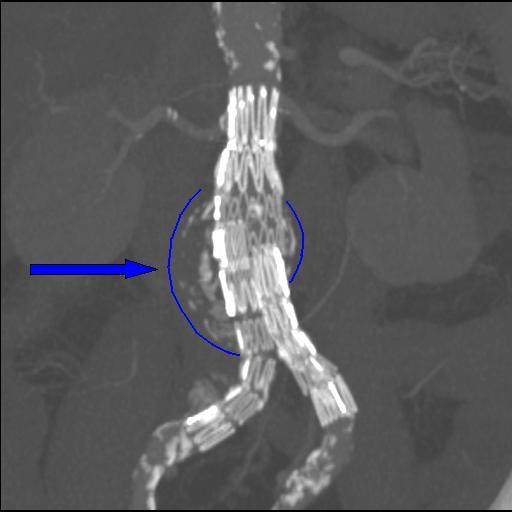|
Stent
In medicine, a stent is a metal or plastic tube inserted into the lumen of an anatomic vessel or duct to keep the passageway open, and stenting is the placement of a stent. A wide variety of stents are used for different purposes, from expandable coronary, vascular and biliary stents, to simple plastic stents that allow urine to flow between kidney and bladder. "Stent" is also used as a verb to describe the placement of such a device, particularly when a disease such as atherosclerosis has pathologically narrowed a structure such as an artery. A stent is different from a shunt. A shunt is a tube that connects two previously unconnected parts of the body to allow fluid to flow between them. Stents and shunts can be made of similar materials, but perform two different tasks. Stent types Etymology The current accepted origin of the word ''stent'' is that it derives from the name of an English dentist, Charles Thomas Stent (1807–1885), notable for his advances in the f ... [...More Info...] [...Related Items...] OR: [Wikipedia] [Google] [Baidu] |
Drug-eluting Stent
A drug-eluting stent (DES) is a peripheral or coronary stent (a scaffold) placed into narrowed, diseased peripheral or coronary arteries that slowly release a drug to block cell proliferation. This prevents fibrosis that, together with clots ( thrombi), could otherwise block the stented artery, a process called restenosis. The stent is usually placed within the peripheral or coronary artery by an interventional cardiologist or interventional radiologist during an angioplasty procedure. Drug-eluting stents in current clinical use were approved by the FDA after clinical trials showed they were statistically superior to bare-metal stents for the treatment of native coronary artery narrowings, having lower rates of major adverse cardiac events (usually defined as a composite clinical endpoint of death + myocardial infarction + repeat intervention because of restenosis). The first drug-eluting stents to be approved in Europe and the U.S. were coated with paclitaxel or an mTOR ... [...More Info...] [...Related Items...] OR: [Wikipedia] [Google] [Baidu] |
Coronary Stent
A coronary stent is a tube-shaped device placed in the coronary arteries that supply blood to the heart, to keep the arteries open in the treatment of coronary heart disease. It is used in a procedure called percutaneous coronary intervention (PCI). Coronary stents are now used in more than 90% of PCI procedures. Stents reduce angina (chest pain) and have been shown to improve survivability and decrease adverse events in an acute myocardial infarction. Similar stents and procedures are used in non-coronary vessels (e.g., in the legs in peripheral artery disease). Medical uses Arterial Stenting 3D Medical Animation An artery with a stent follows the same steps as other angioplasty procedures with a few important differences. The interventional cardiologist uses angiography to assess the location and estimate the size of the blockage ("lesion") by injecting a contrast medium through the guide catheter and viewing the flow of blood through the downstream coronary arteries. Intra ... [...More Info...] [...Related Items...] OR: [Wikipedia] [Google] [Baidu] |
Angioplasty
Angioplasty, is also known as balloon angioplasty and percutaneous transluminal angioplasty (PTA), is a minimally invasive endovascular procedure used to widen narrowed or obstructed arteries or veins, typically to treat arterial atherosclerosis. A deflated balloon attached to a catheter (a balloon catheter) is passed over a guide-wire into the narrowed vessel and then inflated to a fixed size. The balloon forces expansion of the blood vessel and the surrounding muscular wall, allowing an improved blood flow. A stent may be inserted at the time of ballooning to ensure the vessel remains open, and the balloon is then deflated and withdrawn. Angioplasty has come to include all manner of vascular interventions that are typically performed percutaneously. The word is composed of the combining forms of the Greek words ἀνγεῖον ' "vessel" or "cavity" (of the human body) and πλάσσω ' "form" or "mould". Uses and indications Coronary angioplasty A coronary an ... [...More Info...] [...Related Items...] OR: [Wikipedia] [Google] [Baidu] |
Endovascular Aneurysm Repair
Endovascular aneurysm repair (EVAR) is a type of minimally-invasive endovascular surgery used to treat pathology of the aorta, most commonly an abdominal aortic aneurysm (AAA). When used to treat thoracic aortic disease, the procedure is then specifically termed TEVAR for "thoracic endovascular aortic/aneurysm repair." EVAR involves the placement of an expandable stent graft within the aorta to treat aortic disease without operating directly on the aorta. In 2003, EVAR surpassed open aortic surgery as the most common technique for repair of AAA, and in 2010, EVAR accounted for 78% of all intact AAA repair in the United States. Medical uses Standard EVAR is appropriate for aneurysms that begin below the renal arteries, where there exists an adequate length of normal aorta (the ''"proximal aortic neck"'') for reliable attachment of the endograft without leakage of blood around the device ("'' endoleak''"). If the proximal aortic neck is also involved with the aneurysm, the pati ... [...More Info...] [...Related Items...] OR: [Wikipedia] [Google] [Baidu] |
Bare-metal Stent
A bare-metal stent is a stent made of thin, uncoated (bare) metal wire that has been formed into a mesh-like tube. The first stents licensed for use in cardiac arteries were bare metal – often 316L stainless steel. More recent "second generation" bare-metal stents have been made of cobalt chromium alloy.Nikam N et al. Advances in stent technologies and their effect on clinical efficacy and safety. Med Devices (Auckl). 2014 Jun 3;7:165-78. While plastic stents were first used to treat gastrointestinal conditions of the esophagus, gastroduodenum, biliary ducts, and colon, bare-metal stent advancements led to their use for these conditions starting in the 1990s.Park JS, Jeong S, Lee DH. Recent Advances in Gastrointestinal Stent Development. Clin Endosc. 2015 May; 48(3): 209–215. Drug-eluting stents are often preferred over bare-metal stents because the latter carry a higher risk of restenosis, the growth of tissue into the stent resulting in vessel narrowing.Palmerini T et ... [...More Info...] [...Related Items...] OR: [Wikipedia] [Google] [Baidu] |
Genous
Genous is an endothelial progenitor cell (EPC) capture technology manufactured by OrbusNeich that promotes the accelerated natural healing of the vessel wall after stent implantation. The pro-healing technology has an antibody surface coating that captures circulating CD34+ endothelial progenitor cells to the device, forming a functional endothelial layer over the stent to protect against thrombus and minimize restenosis. The Genous Stent is a bio-engineered coronary stent coated with immobilized anti-CD34 monoclonal antibodies specific to the Genous technology. The Combo Dual Therapy Stent is a coronary stent that combines Genous with an antiproliferative, biodegradable sirolimus drug elution. The Combo Stent was shown to be as effective as a paclitaxel Paclitaxel (PTX), sold under the brand name Taxol among others, is a chemotherapy medication used to treat a number of types of cancer. This includes ovarian cancer, esophageal cancer, breast cancer, lung cancer, Kaposi's sarc ... [...More Info...] [...Related Items...] OR: [Wikipedia] [Google] [Baidu] |
Endovascular Surgery
Vascular surgery is a surgical subspecialty in which diseases of the vascular system, or arteries, veins and lymphatic circulation, are managed by medical therapy, minimally-invasive catheter procedures and surgical reconstruction. The specialty evolved from general and cardiac surgery and includes treatment of the body's other major and essential veins and arteries. Open surgery techniques, as well as endovascular techniques are used to treat vascular diseases. The vascular surgeon is trained in the diagnosis and management of diseases affecting all parts of the vascular system excluding the coronaries and intracranial vasculature. Vascular surgeons often assist other physicians to address traumatic vascular injury, hemorrhage control, and safe exposure of vascular structures. History Early leaders of the field included Russian surgeon Nikolai Korotkov, noted for developing early surgical techniques, American interventional radiologist Charles Theodore Dotter who is credited w ... [...More Info...] [...Related Items...] OR: [Wikipedia] [Google] [Baidu] |
Nitinol
Nickel titanium, also known as Nitinol, is a metal alloy of nickel and titanium, where the two elements are present in roughly equal atomic percentages. Different alloys are named according to the weight percentage of nickel; e.g., Nitinol 55 and Nitinol 60. It exhibits the shape memory effect and superelasticity at different temperatures. Nitinol alloys exhibit two closely related and unique properties: the shape memory effect and superelasticity (also called pseudoelasticity). Shape memory is the ability of Nitinol to undergo deformation at one temperature, stay in its deformed shape when the external force is removed, then recover its original, undeformed shape upon heating above its "transformation temperature". Superelasticity is the ability for the metal to undergo large deformations and immediately return to its undeformed shape upon removal of the external load. Nitinol can deform 10–30 times as much as ordinary metals and return to its original shape. Whether Nit ... [...More Info...] [...Related Items...] OR: [Wikipedia] [Google] [Baidu] |
Peripheral Artery Disease
Peripheral artery disease (PAD) is an abnormal narrowing of arteries other than those that supply the heart or brain. When narrowing occurs in the heart, it is called coronary artery disease, and in the brain, it is called cerebrovascular disease. Peripheral artery disease most commonly affects the legs, but other arteries may also be involved – such as those of the arms, neck, or kidneys. The classic symptom is leg pain when walking which resolves with rest, known as intermittent claudication. Other symptoms include skin ulcers, bluish skin, cold skin, or abnormal nail and hair growth in the affected leg. Complications may include an infection or tissue death which may require amputation; coronary artery disease, or stroke. Up to 50% of people with PAD do not have symptoms. The greatest risk factor for PAD is cigarette smoking. Other risk factors include diabetes, high blood pressure, kidney problems, and high blood cholesterol. The most common underlying mechanism of pe ... [...More Info...] [...Related Items...] OR: [Wikipedia] [Google] [Baidu] |
Bile Duct
A bile duct is any of a number of long tube-like structures that carry bile, and is present in most vertebrates. Bile is required for the digestion of food and is secreted by the liver into passages that carry bile toward the hepatic duct. It joins the cystic duct (carrying bile to and from the gallbladder) to form the common bile duct which then opens into the intestine. Structure The top half of the common bile duct is associated with the liver, while the bottom half of the common bile duct is associated with the pancreas, through which it passes on its way to the intestine. It opens into the part of the intestine called the duodenum via the ampulla of Vater. Segments The biliary tree (see below) is the whole network of various sized ducts branching through the liver. The path is as follows: Bile canaliculi → Canals of Hering → interlobular bile ducts → intrahepatic bile ducts → left and right hepatic ducts ''merge to form'' → common hepatic duct ''exits ... [...More Info...] [...Related Items...] OR: [Wikipedia] [Google] [Baidu] |






